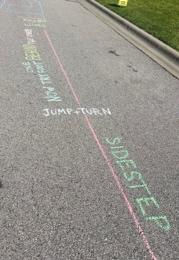Electrotherapy
- All Care Therapies

- Oct 21, 2021
- 2 min read

Electrotherapy is the use of “electrotherapeutic currents and waveforms to influence physiological effects on client body structures and functions (Bellew, 2016).” It is a mechanical modality that uses a mechanical device to administer the treatment. There are both clinical and home units available to provide electrotherapy along with the use of electrodes of varying sizes to deliver electric currents into the skin. Before using or receiving electrotherapy, always be sure that the skin is prepared for the electrodes by being clean and shaven if necessary.
Types of electrotherapy:
High-voltage galvanic stimulation for tissue and wound repair (ESTR)
This type of electrotherapy uses a direct current to assist with wound healing and repair; it promotes tissue repair and development.
High voltage pulsed current (HVPC)
HVPC uses short bursts of high electric voltage levels to promote wound healing, reduce pain, and edema.
Iontophoresis
Iontophoresis is a form of electrotherapy that utilizes both a medical prescription containing a positively charged drug and an electrotherapy device to transfer a current across and through the skin; it is used to reduce pain and inflammation.
Functional electrical stimulation (FES)
FES sends small electrical currents into the muscle to help promote function; for example, the electrical current will pulse and assist a tight hand to bend in order to help move better.
Transcutaneous electrical nerve stimulation (TENS)
A TENS unit uses and sends electrical stimuli through the skin in either a constant or pulsing pattern; TENS is used to reduce pain.
Neuromuscular electrical stimulation (NMES)
NMES sends electrical currents into the muscle that are similar to FES, but the pulse frequency lasts slightly longer in duration and is higher in amplitude.
TENS and NMES are both common types of electrotherapy used at All Care Therapy. TENS units are responsible for targeting sensory nerves to help reduce pain whereas NMES targets the muscle itself creating muscle contractions which are great when facilitating functional movements.
Electrotherapy has many uses and research shows its effectiveness in areas such as pain relief, improved range of motion, muscle re-education, and improvements in spasticity. At All Care Therapies, many of these examples of electrotherapy are used across the board with our patients. The aim is to decrease pain and increase function, and the use of electrotherapy is just one of the numerous ways we work towards giving the best care possible and reaching your goals.
Contraindications
Be sure before you give or receive electrotherapy, check to make sure if the individual receiving has a pacemaker, don’t place electrodes over a pregnant uterus, over the carotid sinus, or within an area of deep vein thrombosis.
References
Physical Agents and Mechanical Modalities. Am J Occup Ther 2018;72(Supplement_2):7212410055.
Bracciano, A. G. (2019). Physical agent modalities: Theory and application for the occupational therapist (3rd ed.). Thorofare, NJ: Slack.
DeSantana, J. M., Walsh, D. M., Vance, C., Rakel, B. A., & Sluka, K. A. (2008). Effectiveness of transcutaneous electrical nerve stimulation for treatment of hyperalgesia and pain. Current rheumatology reports, 10(6), 492–499.
Stein, C., Fritsch, C. G., Robinson, C., Sbruzzi, G., & Plentz, R. D. M. (2015). Effects of Electrical Stimulation in Spastic Muscles After Stroke. Stroke, 46(8), 2197–2205. https://doi.org/10.1161/STROKEAHA.115.009633




Comments